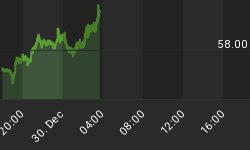Just as energy stocks began to cautiously recover from the lows during the worst of the oil price crash in 2015-2016, equity markets and oil prices took a hit last month in what analysts and financial reporters dubbed the ‘Red October’.
The carnage on the equity markets and the sell-off in oil in the latter half of last month, after Brent and WTI prices had hit four-year highs on October 3, created a perfect storm for energy exchange-traded funds (ETFs), some of which booked their worst monthly performance in years.
Analysts, however, see buying opportunities in oil stocks—one group of investors sees U.S. majors Exxon and Chevron as defensive plays with nice yields that could offer protection from volatility going forward.
Others now see the energy sector as a whole as a buying opportunity, expecting stocks in oil production and exploration and oil field services to start rising in a year or two, when the underinvestment in the industry starts to affect the oil supply and when the current Permian constraints are overcome with the new pipelines coming online through 2020.
During the ‘Red October’, the two key international oil benchmarks sustained their biggest monthly drops since July 2016. WTI Crude plunged by 10.8 percent in October, according to Dow Jones Market Data, while Brent Crude prices fell 8.8 percent.
The month of October began with rallying oil prices that surged to their highest in four years as investors and traders feared a shortage of supply would follow thanks to the U.S. sanctions on Iran. As the month progressed, the mood flipped from bullish expectations of ‘not enough oil’ to bearish sentiment of a possible glut next year and demand destruction in emerging markets due to the higher oil prices.
The first day of November didn’t offer any relief for oil prices and oil stocks either, as WTI settled at its lowest level since April 9, dropping for the first time in more than a year below its 200-day moving average. Brent settled at its lowest since August 21, falling below the 200-day moving average for the first time since September 2017, according to FactSet data, as carried by MarketWatch. Related: MIT Invests $1 Billion In Artificial Intelligence
The XLE energy ETF lost 11 percent in October—its worst monthly performance since September 2011.
Amid this volatile market, shares in Exxon and Chevron are attractive because of their defensiveness, Boris Schlossberg, managing director of FX strategy at BK Asset Management, told CNBC on October 31.
The higher dividend yields of both companies—Exxon’s 4.1 percent and Chevron’s 4 percent—compared to the 2.65-percent yield of ETFs XLE and 1.85 percent for SPDR S&P 500 ETF Trust, makes them attractive, according to Schlossberg.
Craig Johnson, chief market technician at Piper Jaffray, also believes that the energy stocks could start to pick up, with emphasis on Exxon, which could break out from the range of its 40-week moving average.
“Exxon Mobil looks like a name that’s been consolidating when you look at that chart over the past couple of years,” Johnson told CNBC. “From our perspective, those kinds of charts usually resolve themselves to the upside, not the downside.”
The backdrop in energy has never been better with the underinvestment in the industry over the last three-four years, Edward Muztafago of Societe Generale told CNBC on October 24. James Wicklund of Credit Suisse concurred that energy could be a great buying opportunity, noting that when the Permian constraints are resolved, there would be recovery in onshore U.S. services sector stocks. Longer term, Societe Generale sees stocks exposed to the offshore business having better long-term potential, Muztafago said.
Yet, amid the peak oil demand narrative, investors have been cautious about betting too much on oil stocks for the long term. Energy stocks have been underperforming the rising prices of the underlying commodity over the past year, despite the fact that the oil supermajors called the end of the downturn a few quarters ago and have been raking in more cash and profits thanks to higher oil prices.
By Tsvetana Paraskova for Oilprice.com
More Top Reads From Safehaven.com:

















